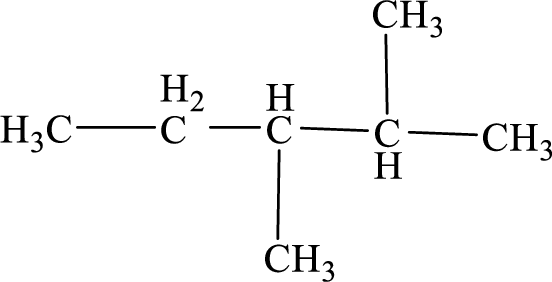
(a)
Interpretation:
The given compound can exhibit optical activity. The chiral centres have to be identified in the compound.

Concept Introduction:
The isomers which are mirror images of each other and are non-superimposable are said to be optical isomers and the isomerism is said to be optical isomerism. The optical isomers are also called as enantiomers. The optical isomers which rotates the plane-polarized light are optically active.
The optical isomers are asymmetric and plane of symmetry will be absent. An organic molecule is said to be chiral when it is bonded to four different groups and is asymmetric. The carbon atom bonded to four different groups is said to be chiral carbon or asymmetric carbon. An organic compound is said to be optically active when it contains at least one chiral center.
(b)
Interpretation:
The given compound can exhibit optical activity. The chiral center has to be identified in the compound.

Concept Introduction:
The isomers which are mirror images of each other and are non-superimposable are said to be optical isomers and the isomerism is said to be optical isomerism. The optical isomers are also called as enantiomers. The optical isomers which rotates the plane-polarized light are optically active.
The optical isomers are asymmetric and plane of symmetry will be absent. An organic molecule is said to be chiral when it is bonded to four different groups and is asymmetric. The carbon atom bonded to four different groups is said to be chiral carbon or asymmetric carbon. An organic compound is said to be optically active when it contains at least one chiral center.
Want to see the full answer?
Check out a sample textbook solution
Chapter 15 Solutions
CHEMISTRY(LOOSELEAF) W/CONNECT+EBOOK
- help 20arrow_forwardProvide the drawing of the unknown structure that corresponds with this data.arrow_forward20.44 The Diels-Alder reaction is not limited to making six-membered rings with only car- bon atoms. Predict the products of the following reactions that produce rings with atoms other than carbon in them. OCCH OCCH H (b) CH C(CH₂)s COOCH མ་ནས་བ (c) N=C H -0.X- (e) H C=N COOCHS + CH2=CHCH₂ →→arrow_forward
- 3) Draw a detailed mechanism and predict the product of the reaction shown? 1) EtMgBr 2) H3O+arrow_forwardHow to draw the mechanism for this reaction?arrow_forward> H₂C=C-CH2-CH3 B. H₂O Pt C. + H2 + H₂O H D. 16. Give the IUPAC name for each of the following: B. Cl Cl c. Cl Cl 17. Draw the line-angle formula for each of the following compounds: 1. phenol 2. 1,3-dichlorobenzene 3. 4-ethyltoluene < Previous Submit Assignment Next ▸arrow_forward
 ChemistryChemistryISBN:9781305957404Author:Steven S. Zumdahl, Susan A. Zumdahl, Donald J. DeCostePublisher:Cengage Learning
ChemistryChemistryISBN:9781305957404Author:Steven S. Zumdahl, Susan A. Zumdahl, Donald J. DeCostePublisher:Cengage Learning ChemistryChemistryISBN:9781259911156Author:Raymond Chang Dr., Jason Overby ProfessorPublisher:McGraw-Hill Education
ChemistryChemistryISBN:9781259911156Author:Raymond Chang Dr., Jason Overby ProfessorPublisher:McGraw-Hill Education Principles of Instrumental AnalysisChemistryISBN:9781305577213Author:Douglas A. Skoog, F. James Holler, Stanley R. CrouchPublisher:Cengage Learning
Principles of Instrumental AnalysisChemistryISBN:9781305577213Author:Douglas A. Skoog, F. James Holler, Stanley R. CrouchPublisher:Cengage Learning Organic ChemistryChemistryISBN:9780078021558Author:Janice Gorzynski Smith Dr.Publisher:McGraw-Hill Education
Organic ChemistryChemistryISBN:9780078021558Author:Janice Gorzynski Smith Dr.Publisher:McGraw-Hill Education Chemistry: Principles and ReactionsChemistryISBN:9781305079373Author:William L. Masterton, Cecile N. HurleyPublisher:Cengage Learning
Chemistry: Principles and ReactionsChemistryISBN:9781305079373Author:William L. Masterton, Cecile N. HurleyPublisher:Cengage Learning Elementary Principles of Chemical Processes, Bind...ChemistryISBN:9781118431221Author:Richard M. Felder, Ronald W. Rousseau, Lisa G. BullardPublisher:WILEY
Elementary Principles of Chemical Processes, Bind...ChemistryISBN:9781118431221Author:Richard M. Felder, Ronald W. Rousseau, Lisa G. BullardPublisher:WILEY





